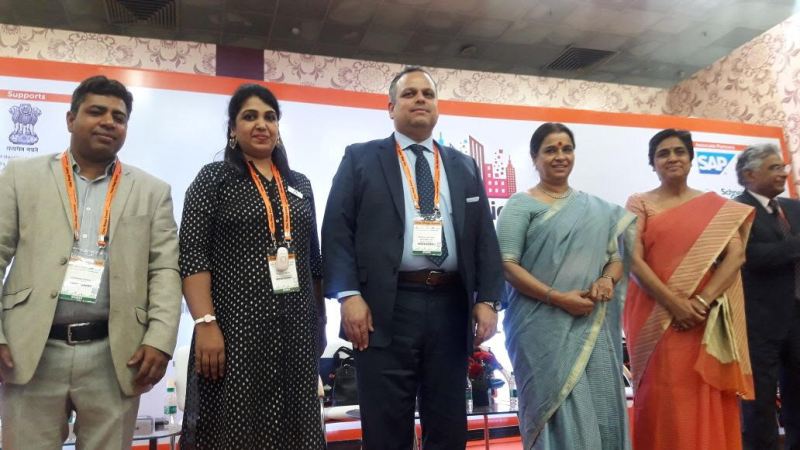Dr Ranjana Kumari was a panelist at the 4th Smart Cities India Expo, hosted by Ministry of Housing and Urban Affairs, in association with other ministries of the Government of India. The expo is currently being held at Pragati Maidan, New Delhi. The following is the gist of what Dr Kumari spoke at the event.


As per the 11th Sustainable Development Goal (SDG) of ‘Sustainable Cities and Communities’, “Making cities safe and sustainable means ensuring access to safe and affordable housing, and upgrading slum settlements. It also involves investment in public transport, creating green public spaces, and improving urban planning and management in a way that is both participatory and inclusive.” The global SDG when customized to the Indian setup calls for sensitized human resources that are part of the systems and structures responsible for making cities safer and smarter. The need for humane city as a pre-requisite to safe and smart city is felt owing to the high numbers of crimes against women in the country. In the year 2016, the National Crime Records reported in 88008 instances of kidnapping and abduction, 38947 instances of rape and 5729 instances of attempt to Commit Rape. It is important to note that the NCRB is a reservoir of recorded crimes. Many crimes in India are under-reported and unreported.
“A city cannot be smart unless it is #safe” @ranjanakumari was a panelist at the 4th #Smart#Cities#India 2018 Expo hosted by #Ministry of #Housing and #Urban#Affairs along with other ministries. #ThursdayThoughts#SmartCitiespic.twitter.com/ih4wm0j5N7
— CSR (@CSR_India) May 24, 2018
In the context of sensitized human resources for making a city safer, especially for women and girls, there are criteria of urban infrastructure planning, Good governance and Regulation of city and Regulation and management of human resources
Lutyens’ Delhi can be considered as the ideal example of infrastructural setup that is centres around citizen convenience and safety. The way traffic is regulated, recreation centres are built, green spaces are reserved and architectural principles have been followed ensures that citizens not only have ease of accessing places but also eliminates possibilities of anti-social activities from taking place. Important institutions should be insulated from potential crimes. Hospitals should be accessible from the main road, schools should not have smoking places or dark spots in the vicinity, residential areas should find accessible all the important establishments like police stations and public transport. Instead of generating more spaces for children, existing places like school playgrounds should be leveraged. This reduces vulnerability of children to crimes that can be committed against them when they use roads and other unsafe places to venture. A city’s infrastructure should also factor in growing population and developing economic scenario to accommodate the changing needs of the citizens.
A government that is accountable to its citizens is the cornerstone of good governance. The citizens should feel that their grievances have an organized redressal system that is efficient and humane. A socially and ecologically healthy environment that good governance could provide would lead to better quality lives of citizens. Good governance is ‘caring-for-people’ government that puts citizen safety and welfare at the centre of planning and execution that makes a city safe and smart. Generation of safe livelihood options is one of the important factors in good governance.
There is an exponential influx of migration into the metro cities. Management of spaces, infrastructure livelihood, safety and security to accommodate burgeoning population is imperative for city to continue developing. Women and girls are more at risk of crimes being committed against them if anti-social elements mingle effortlessly with the general population. Unemployment, harassment and deprivation of migrants push them to undertake anti-social activities of which women and girls are the first and the worst casualty.
The Centre for Social Research (CSR) identifies law enforcement agencies as the first post of grievance redressal for citizens. The organization has been undertaking gender sensitization training for police officials since the year 1997. Recently, the network of capacity building initiatives have spread to several states like Jammu and Kashmir, Puducherry, Manipur, Bengaluru, Madhya Pradesh and Rajasthan. Apart from gender sensitization of police officials, CSR also works on generating sensitized public transport stakeholders by holding a dialogue with Ola cab drivers. We recommend a humane city as the foundation of safe and smart city. In order to do so, extensive outreach to all stakeholders for gender sensitivity is important and creating schemes and policies will ensure institutional measures for creation of safe cities




